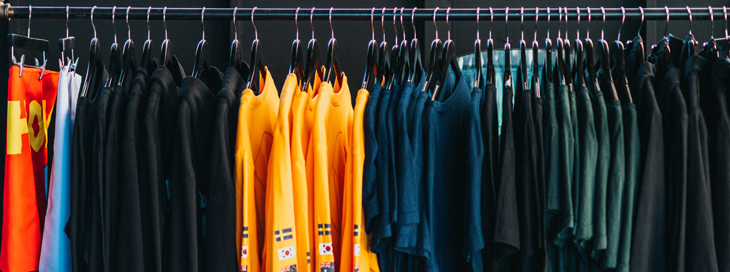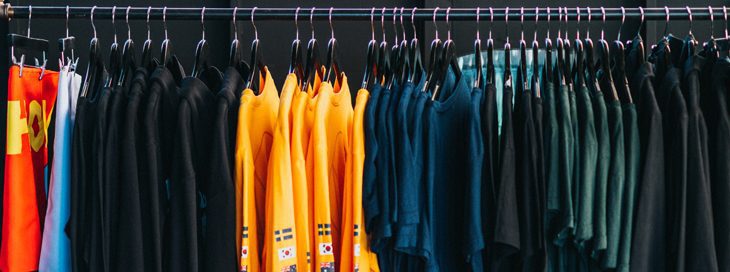
Huge volumes of inventory are a problem, H&M are a fantastic case study for this with a $4.3bn problem on their hands. In March 2019 H&M announced that they had stock of this value of hard to shift inventory. This has resulted in high levels of discounting and reduced profits.
What’s more, as well as being bad for business, it’s bad for the planet, as all of this product has to go somewhere.
While H&M are on the extreme side of this problem. It’s not an uncommon one, with smaller stores and even bands making poor decisions when it comes to their merchandise. Resulting in them being left with stock they can’t sell to consumers. There is nothing wrong with these products, other than that they have designs that are not the most up to date.
Over stocking isn’t the only problem when it comes to the clothing supply chain. The final leg of delivery is known in the logistical world as ‘the last mile’; today this last mile is one of the most challenging and most expensive parts of a product's journey. This is in part due to the rise of services like Amazon Prime, where consumers have become accustomed to ‘buy today, have tomorrow’. This is exacerbated in the world of fashion and merchandise by rapidly changing trends.
Once upon a time you could have your thousands of products for a season sitting in a warehouse ready to be dispatched as and when orders came in. However, we now live in a world where seasons last a matter of weeks; so where a bad decision is made on stock, retailers can be left with thousands of units which they have to markdown to get rid of.
It’s problems like this, combined with a rapidly changing digital and physical environment that is causing retailers of all sizes to struggle. While this may sound depressing, technology may change everything.
One technological development that is likely to shape the future retail landscape is micro manufacturing. Micro manufacturing is the process of manufacturing products in small quantities - as opposed to making really tiny products!
There is now a small legion of brands taking the lead like High Hope Clothing, who are flipping the script. They’ve invested in DTG technology, enabling them to create micro production runs. There’s no complex labelling or anything like that on their organic t-shirts & products; they keep things simple with printing on the front or back of the garments. This keeps their costs low and ensuring maximum efficiency in production.
GymShark are another brand leading the way, they recently unveiled their Innovation Hub, a facility that contains a micro factory, allowing them to sample and create micro runs quickly and in-house. The goal behind this is to reduce the time it takes to get new products to market (traditional sampling can take months), and to allow them to rapidly roll-out limited edition products like printed t-shirts and vests with minimal turnaround times.
This new era of manufacturing is providing the opportunity to produce very small volumes of product, and in turn massively reduce the risk of overstocking. What’s more, the technology that’s facilitating this is available to brands, and bands of all sizes. Some brands are making the jump and spending tens of thousands (or even millions) investing in this technology and bringing the machines in house.
However, many are outsourcing. This not only enables greater scalability and flexibility (through piggybacking on another established supply chain), but also ensures that as the technology evolves, they can too. With digital printing changing so quickly, this is ideal for smaller brands that cannot afford to replace an entire fleet of machines as soon as the next innovation comes along.
Micro manufacturing also reduces ‘the last mile’, as brands can still have stock on hand and ready to go in the same way as before, just without the need for large volumes.
While reduced wastage is great, one hidden benefit is a faster reaction time. The technology means brands no longer have to produce overseas with long lead times, but can in fact print their products closer to the end customer, bringing the time to market down to days & weeks. This is allowing brands to quickly react to trends, creating new product lines rapidly with minimal wastage.
This type of production is not only good for business, it’s also good for the planet with less waste, fewer miles covered in logistics and fewer products produced.
While the price of production on a smaller quantity is generally higher when compared to buying hundreds or thousands of units, equal amounts are saved through avoiding excess inventory (and the associated storage costs), combined with the ability to quickly and easily change or remove products that are not selling as well, without having to discount them.
Micro production runs are likely something you’ll hear a lot more of in the coming months and years, as many are rising up to this challenge both big and small.
If you’re looking to out-source your micro production runs for printed and embroidered clothing, we’d love to help. We use the latest DTG technology, with Kornit HD6 & Atlas printers at current, providing you access to the best print machinery available in Europe. Just get in touch.
* Find this article useful?
Sign up to our newsletter, for the latest news, resources, trends and exclusive discounts.
Join our newsletter
If confirmation doesn't arrive in your inbox following subscription check your spam/junk mail.


